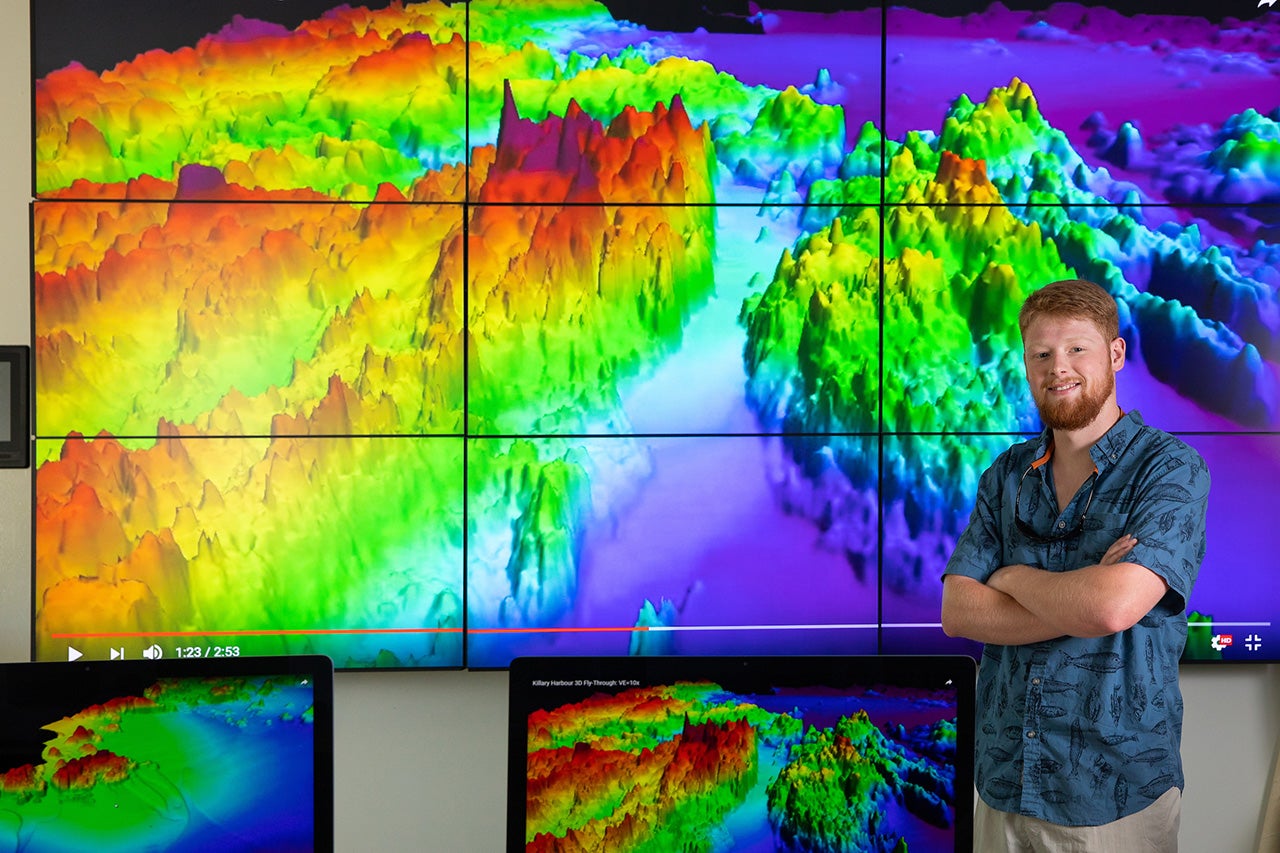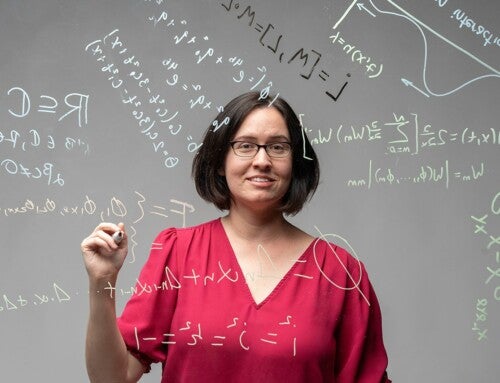There is more than one way to mine the majestic depths of the ocean. Ask Ryan Hawsey ’18. The geology major has spent his college days scouring this vast and watery terrain by relying as much on software as he does on scuba gear.
“The oceans make up two-thirds of our planet and only 3 to 5 percent have been mapped to any detail,” he says. “We know way more about the surface of our moon or the surface of Mars than we know about most of our oceans.”
Hawsey’s consuming pursuit has a name, hydrography, the science of collecting data on the physical features of bodies of water. To do so, hydrographers conduct surveys using multibeam echo sounders and other types of sonar, which sweep the seafloor from research ships as they pass over the area being charted.
“Then, we take the maps that we create and edit and use them to do geologic research,” says Hawsey, who was initially a marine biology major before becoming enthralled with oceanographic mapping of the geology department’s BEAMS (Benthic Acoustic Mapping and Survey) program, started by marine geology professor Leslie Sautter. “I was immediately hooked.”
He’s been charting everything from oyster beds to shipwrecks ever since.
Philanthropy has played a major role in this deep dive. Hawsey is the recipient of the Kanapaux-Magrath Endowed Scholarship, which recognizes gifted students with financial need. The fund’s benefactor, Margaret “Peggy” Kanapaux Sullivan ’39, was herself no stranger to Charleston’s surrounding waters. She served during World War II as a member of the Navy’s first class of WAVES (Women Accepted for Volunteer Emergency Service). The scholarships, which were named in honor of her parents, Charles Carew Kanapaux and Annie Elizabeth Magrath, were funded before her death in 1998 to demonstrate her love of the College.
Hawsey’s ardor for all things aquatic started during his childhood in Lexington, S.C., when he first learned about marine biology for a third-grade class project. By the age of 12, he had obtained his scuba open water certification, and soon went on to receive additional advanced certifications. At the same time, he also got his feet wet on the beaches surrounding Charleston.
“I grew up coming to Folly Beach, the Isle of Palms and downtown Charleston for fun,” says Hawsey, whose mother was born in the city when his grandfather was stationed here during his service in the Navy. On a visit during his junior year in high school, Hawsey toured the College and quickly determined it was the place for him.

Ryan Hawsey sets up an EchoBoat, an autonomous surface vehicle that does hydrographic surveys. (Photos by Mike Ledford)
To say that Hawsey’s studies have been immersive is an understatement: He has seized numerous opportunities to both conduct research and to present it. In his sophomore year, for instance, an internship took him to work with the Marine Institute of Ireland, joining a two-week-long cruise off the southern part of the country. He shared his findings at the 2016 Canadian Hydrographic Conference, and then later used the data collected to compare ways to process shipwreck data, presenting the resulting poster at the U.S. Hydrographic Conference in Galveston, Texas.
In the summer of 2017, he was off to Massachusetts for a student fellowship at the prestigious Woods Hole Oceanographic Institution, where he helped bring cleaner and more accurate data into the software that is part of the geologic research process.
“I worked that summer with one of the postdocs, Adam Soule, on some data that was collected over the Mid-Atlantic Ridge a few years prior using an autonomous underwater vehicle,” says Hawsey.
And that’s just skimming the surface. Hawsey has also joined a multi-day research cruise on the R/V Savannah off of the South Carolina coast to collect fish habitat data and map more of the seafloor. In addition to presenting at the American Geophysical Union Conference in San Francisco, he also assisted with side-scan sonar mapping of dredge sites between the jetties in the Charleston Harbor, presenting the data at the 2018 Ocean Sciences meeting in Portland, Ore.
The ever-engaged geologist rounded his College days working with Scott Harris, associate professor in the Department of Geology and Environmental Geosciences, setting up a new autonomous surface vehicle (right) provided to the College by Seafloor Systems Inc., a hydrographic survey equipment manufacturer. Fall-semester students will use it to map part of the Stono River over an oyster farm to get a better idea of the dynamics of the river and what the bottom of the river looks like in a three-dimensional sense.
“Not as many students have had as much opportunity as I have had to be on large survey vessels,” he says of the ripple effect of his work with the new equipment. “It will provide a lot of opportunity for students after me to gain valuable experience.”
This summer, the new graduate starts work at NASA’s Stennis Space Center in Mississippi, joining the Naval Oceanographic Office’s Fleet Survey Team. The ocean surely will have much to say to Hawsey as he embarks on his career. Thanks to his expansive undergraduate adventures, Hawsey is more than prepared to listen.




